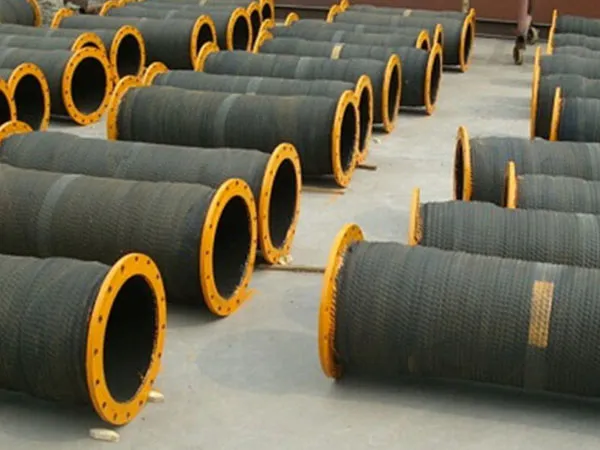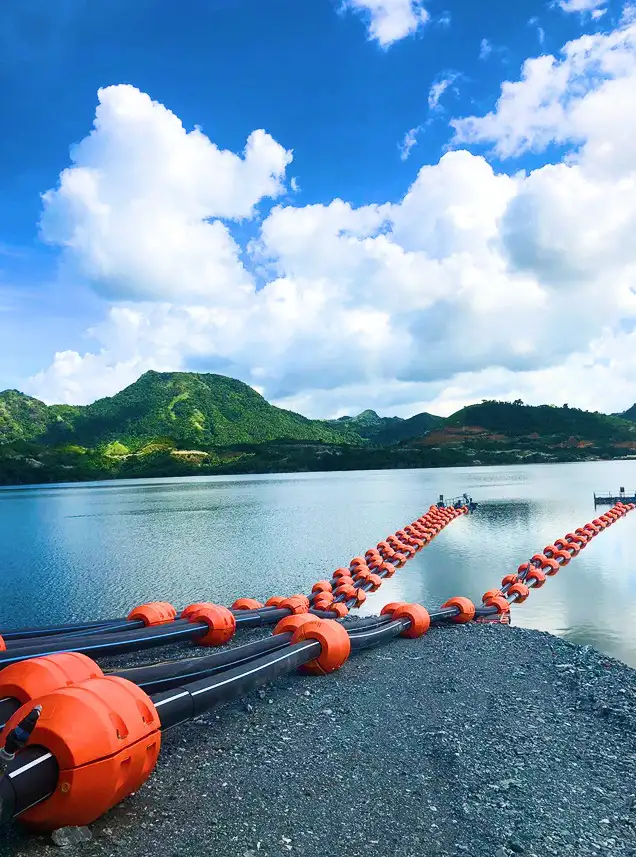
A sand discharge rubber Hose (also known as a slurry hose, dredging hose, or material handling hose) is a heavy-duty, flexible conduit specifically engineered to transport abrasive materials like sand, gravel, slurry, cement, and other granular substances.
A sand discharge rubber hose is a crucial component in various industries, particularly those involving the movement of abrasive materials like sand, gravel, and slurry. These hoses are specifically designed to withstand harsh conditions and provide efficient and reliable transfer of such media.
Dredging Operations: This is a primary application. Sand discharge hoses are used in conjunction with dredgers to transport silt, sand, mud, and gravel from rivers, lakes, ports, and other water bodies for purposes like land reclamation, waterway maintenance, and environmental cleanup. They connect the dredger to the discharge line, often acting as flexible joints between rigid pipes.
Mining: Used for conveying abrasive slurries, mineral ores, and other bulk materials in both above-ground and underground mining.
Construction: Employed for the discharge of dry bulk materials like sand, cement, gravel, and concrete in construction sites.
Industrial Cleaning: Can be used for the suction or discharge of water and light slurries in various industrial cleaning processes.
Other Material Handling: Suitable for general material handling of abrasive powders and granular materials.
Abrasion Resistance: The most critical feature. The inner tube is specifically designed to resist wear and tear from highly abrasive materials like sand, ensuring a longer lifespan.
Flexibility: Allows for easy installation, maneuverability, and adaptation to different terrains and pipeline configurations, especially in dynamic environments like dredging. They can absorb vibrations and accommodate movement caused by waves or shifting ground.
High Tolerance: Capable of handling significant pressures and maintaining integrity under demanding operating conditions.
Weather and Ozone Resistance: The outer cover is typically designed to withstand exposure to sunlight, ozone, and varying weather conditions, preventing degradation.
Kink Resistance: Reinforced construction prevents the hose from kinking or collapsing, ensuring uninterrupted flow.
Smooth Interior: A smooth inner lining helps prevent clogging and facilitates the efficient flow of materials, reducing friction and potential damage.
Durability: Constructed from robust materials to provide a long service life in challenging environments.
Temperature Range: Generally designed to operate within a specific temperature range, typically from -20°C to +70°C.
Customization: Available in various inner diameters, wall thicknesses, and lengths to suit specific application requirements. Can be fitted with different end connections like fixed steel flanges, loose steel flanges, or rubber flanges.
A typical sand discharge rubber hose is composed of three main layers:
Inner Tube (Liner): This is the wear-resistant layer that comes into direct contact with the transported material. It's usually made from a blend of natural rubber (NR) and synthetic rubbers like SBR (Styrene-Butadiene Rubber), BR (Butadiene Rubber), or HNBR (Hydrogenated Nitrile Butadiene Rubber). These compounds are chosen for their excellent abrasion, corrosion, and often seawater resistance. Some specialized hoses may also feature polyurethane or ceramic tile liners for extreme abrasion.
Reinforcement Layer: This layer provides the hose with its strength, pressure resistance, and kink resistance. It typically consists of:
High-strength synthetic fabric: Multiple plies of textile cords (e.g., polyester) woven into the rubber.
Spiral steel wire: A helix of steel wire embedded within the rubber, providing full vacuum capability and preventing collapse or kinking. Some hoses may also incorporate anti-static copper wires.
Outer Cover: This protective layer is made of synthetic rubber (e.g., SBR, NR, or neoprene) that is resistant to oil, abrasion, weathering, ozone, and sometimes UV light. It helps protect the internal layers from external damage and environmental factors.
While often used interchangeably, there can be subtle distinctions and specialized types:
Discharge Hoses: Primarily designed for expelling materials under pressure.
Suction Hoses: Designed to withstand negative pressure (vacuum) for drawing in materials. These often have a more robust steel wire helix.
Suction and Discharge Hoses: Versatile hoses that can handle both suction and discharge applications.
Floating Dredge Hoses: Equipped with buoyancy elements (pipe floats) that allow them to float on water, essential for marine dredging operations.
Hard-wall vs. Soft-wall: Hard-wall hoses maintain their shape even under vacuum, while soft-wall hoses are more flexible and collapse when not pressurized.
Pre-formed Bend Hoses: Manufactured with a specific bend to accommodate particular pipeline configurations.
Armored Hoses: Feature additional external protection for extremely demanding applications.
In summary, sand discharge rubber hoses are engineered products that play a vital role in moving abrasive materials across various industries. Their robust construction and specialized materials ensure durability, flexibility, and efficient performance in challenging environments.
